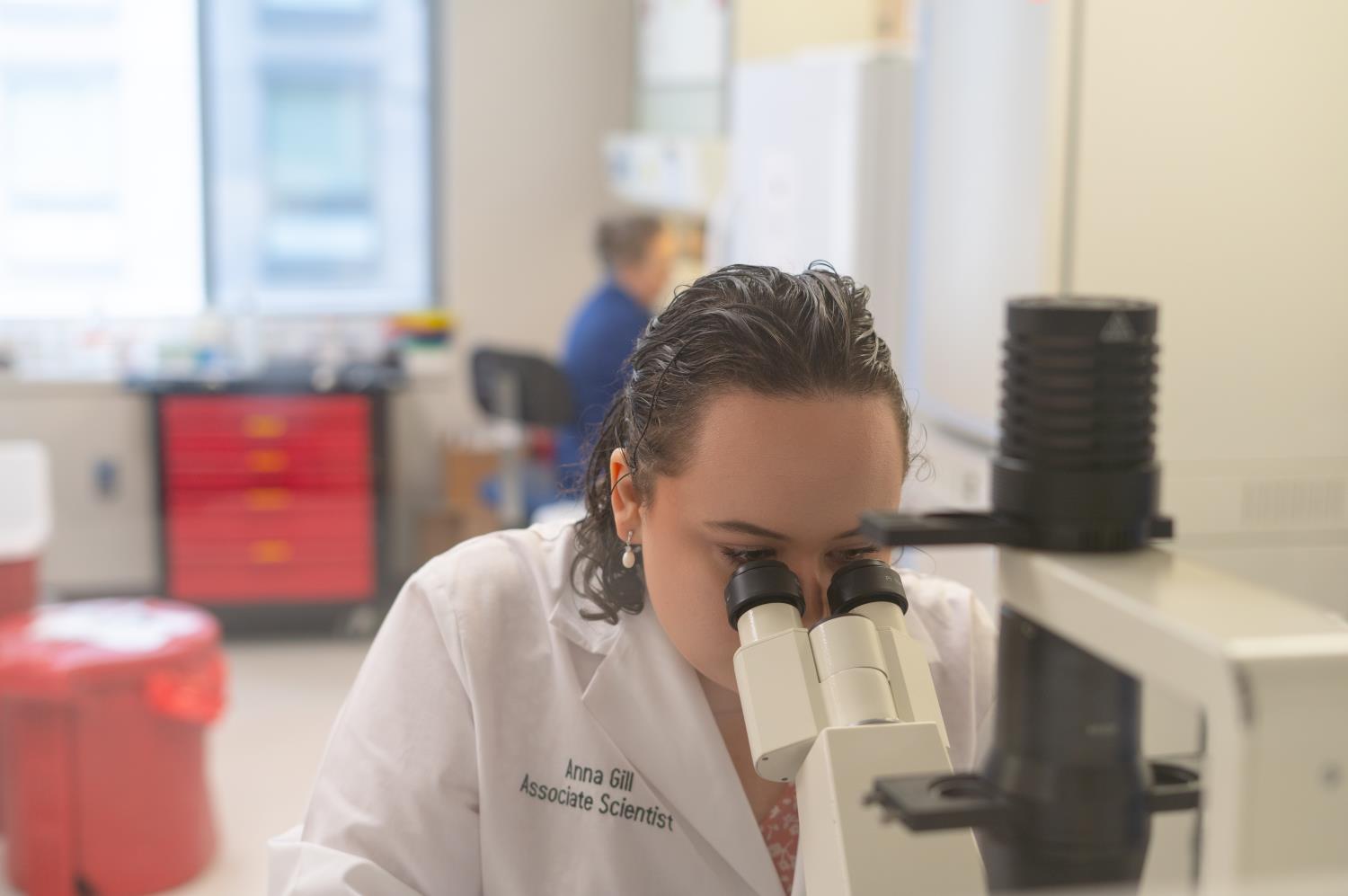
We know that C9orf72 repeat expansion mutations are the most common cause of ALS ¬– but the mechanisms of how and why it causes the disease remain, for the most part, a mystery. However, a new paper by ALS Therapy Development Institute (ALS TDI) scientist, Anna Gill, and several collaborators, may have a promising new clue as to why these C9orf72 mutations may be particularly toxic for brain cells.
Gill’s paper, Primary Neurons and Differentiated NSC-34 Cells Are More Susceptible to Arginine-Rich ALS Dipeptide Repeat Protein-Associated Toxicity than Non-Differentiated NSC-34 and CHO Cells, was published December 11,2019 in The International Journal of Molecular Sciences. It was co-authored by Monica Wang, Beth Levine, Alan Premasiri, and Fernando Vieira, M.D.
This paper is the result of years of work by Gill, who began researching this line of inquiry as a summer intern with ALS TDI in 2015. It grew to be the subject of her undergraduate thesis as part of her Honors program at Emmanuel College.
In their paper, Gill and co-authors demonstrated that some aberrant proteins produced because of mutations in the C9orf72 gene, arginine-rich dipeptide repeat proteins, are more toxic to neuronal - cells in the brain and spinal cord - than to other kinds of cells found in the body. This could be an important clue as to why the presence of this particular mutation leads to a neurodegenerative disease like ALS, as opposed to causing other illnesses.
They did this using three different kinds of cells – Chinese hamster ovary cells, or CHOs, mouse motor neuron-like hybrid cells, or NSC34, and primary motor neurons derived directly from mouse spinal cords. These different cell types represent a gradient of cells that are less neuronal (CHOs) to actual motor neurons.
For this experiment, Gill and the team exposed each of these cell types to polyGR and polyPR, two dipeptide repeat proteins produced by C9ORF72 mutations. They were able to measure the cell's reactions to these proteins. The polyGR and polyPR proteins were least toxic to the CHO cells, then increasingly more toxic to NSC34 cells as they were coaxed to be more neuronal, and finally, most toxic to the primary motor neurons. Something about what makes brain cells different from other cells in the body may cause them to be more susceptible to polyGR and polyPR toxicity.
Key Take-aways:
These findings are significant in that they may offer a partial explanation for why C9orf72 repeat expansion mutations cause neurodegeneration rather than other ailments.
In addition, the paper describes experimental systems that Gill and her team have developed for measuring toxicity, thus allowing further testing for things that rescue cells from the toxicity. Those experiments may reveal drug targets and treatments for C9orf72 ALS - work that is ongoing in the lab now.
Research Updates:
In September 2020 ALS TDI scientists published a paper announcing their discovery of a new drug target for C9ORF72 ALS. You can read more about the discovery here.
To learn more about the research being done at ALS TDI, visit our ALS Research page.